Azerbaijan during the Soviet Union and beyond refers to the historical period from 1920, when Azerbaijan became part of the USSR, through its independence in 1991 and subsequent nation-building.
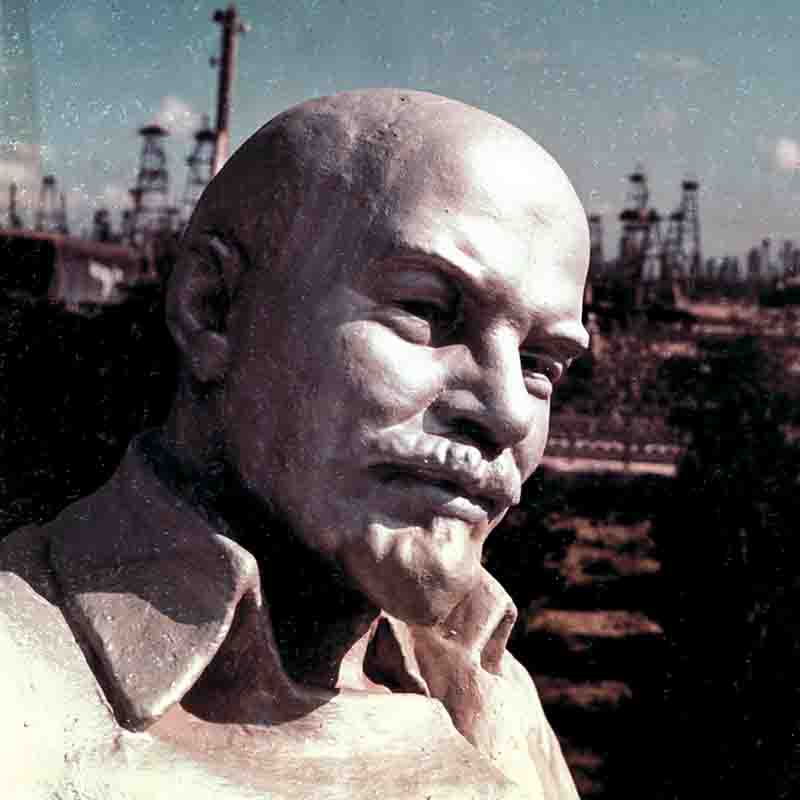
Azerbaijan’s story reflects the challenges of moving from state control to national independence and the determination to define its own future in the post-Soviet world.
Azerbaijan’s Soviet Legacy
Azerbaijan was part of the Soviet Union from 1920 until 1991.
During this period, it developed as one of the most important industrial and cultural centers in the South Caucasus.
Its oil industry was vital to the USSR economy, especially during World War II, when Baku supplied more than half of the Soviet Union’s fuel.
In the 1960s and 1970s, Azerbaijan grew under the leadership of Heydar Aliyev.
He modernized industries, improved education, and promoted local specialists within the Soviet structure.
In January 1990, Soviet troops entered Baku to suppress independence protests, killing more than 100 civilians.
This event, known as Black January, became a turning point in Azerbaijan’s struggle for independence.
Azerbaijan declared independence in 1991 after the fall of the Soviet Union.
The country’s journey from a Soviet republic to an independent nation reflects one of the most significant transformations in the South Caucasus.
12 key facts about Azerbaijan
-
Soviet Republic: After the Red Army invaded Baku in April 1920, the Azerbaijan Democratic Republic, the first secular Muslim majority democracy, was dissolved. It became the Azerbaijan Soviet Socialist Republic (Azerbaijan SSR) and remained under Moscow’s control for 71 years.
-
USSR’s Main Oil Supplier: During the 1930s and 1940s, Baku’s oil fields provided more than 50% of the Soviet Union’s oil output. The city was critical during World War II, fueling the Red Army and making Azerbaijan one of the Soviet Union’s most important industrial regions.
-
Azerbaijani Intellectuals: In the late 1930s, Joseph Stalin’s Great Purge led to the imprisonment or execution of thousands of Azerbaijani intellectuals, writers, and scholars. This eliminated much of the country’s pre-Soviet elite and reshaped cultural life under strict ideological control.
-
Soviet Industrialization: The USSR built factories, schools, and infrastructure throughout the republic. Projects like Neft Daşları (Oil Rocks), the world’s first offshore oil platform, symbolized Soviet engineering success. Education and literacy expanded dramatically during this period.
-
Heydar Aliyev’s Leadership: Appointed First Secretary of the Communist Party of Azerbaijan in 1969, Heydar Aliyev promoted industrial modernization, education, and administrative reform. He raised living standards and strengthened Azerbaijan’s influence within the Soviet structure.
-
National Identity: The Soviet government replaced the Latin alphabet with Cyrillic, restricted religion, and discouraged expressions of national pride. Still, Azerbaijani culture, language, music, and traditions, persisted privately and resurfaced in the late Soviet years.
-
Nagorno-Karabakh Conflict: Under Gorbachev’s Perestroika, Armenians in the Nagorno-Karabakh Autonomous Oblast demanded unification with Armenia, sparking ethnic clashes and mass protests in Azerbaijan. This issue became central to Azerbaijan’s independence movement.
-
Black January: On January 19–20, 1990, Soviet troops entered Baku to suppress pro, independence demonstrations, killing over 100 civilians. Known as Black January, the tragedy intensified anti-Soviet sentiment and accelerated the push for independence.
-
Independence in 1991: Following the collapse of the USSR, Azerbaijan declared independence on October 18, 1991. However, the early years were marked by political instability, economic collapse, and the First Nagorno-Karabakh War (1991–1994).
-
Contract of the Century: In 1994, President Heydar Aliyev signed the Contract of the Century with international oil companies. This opened Azerbaijan’s Caspian oil reserves to foreign investment and led to major projects like the Baku–Tbilisi–Ceyhan pipeline, connecting Azerbaijan to global markets.
-
Ilham Aliyev: After Heydar Aliyev’s death in 2003, his son Ilham Aliyev became president. His administration emphasized stability, economic growth, and energy diplomacy, while critics noted limited political freedoms and media control.
-
Soviet Legacy: Today, Azerbaijan uses its energy wealth and strategic location between Europe and Asia to build regional influence. It is a key member of the Non-Aligned Movement, invests in renewable energy, and works to rebuild areas reclaimed after the 2020 Nagorno-Karabakh War.
Azerbaijan’s trajectory from Soviet control to independent statehood reflects a broader post-Soviet theme: centralized governance, rapid modernization, and a constant effort to balance historical identity, economic growth, and regional security.
From its time as the Azerbaijan Soviet Socialist Republic (Azerbaijan SSR) to its emergence as an independent state in 1991, the country has experienced sweeping political, economic, and cultural change.
Timeline of Azerbaijan During the Soviet Union and Beyond
Azerbaijan became part of the Soviet Union in 1920 after the Red Army occupied Baku, ending the short-lived Azerbaijan Democratic Republic.
During this period, Azerbaijan’s oil industry became one of the USSR’s main economic engines.
Today, Azerbaijan stands as a sovereign state that combines Soviet-era institutions with modern ambitions.
| Year | Milestone |
|---|---|
| 1918–1920 | Azerbaijan Democratic Republic (ADR) becomes the first secular Muslim majority democracy in the East. Overthrown by the Red Army in 1920 after two years of independence. |
| April 28, 1920 | The Red Army occupies Baku, establishing the Azerbaijan Soviet Socialist Republic (Azerbaijan SSR) under Bolshevik rule. |
| 1922 | Azerbaijan SSR becomes part of the Transcaucasian Soviet Federative Socialist Republic (TSFSR) alongside Armenia and Georgia, later joining the Union of Soviet Socialist Republics. |
| 1936 | The TSFSR is dissolved; Azerbaijan becomes a direct constituent republic of the USSR. |
| 1937–1938 | Thousands of Azerbaijani intellectuals, writers, and political leaders are arrested or executed during widespread Soviet purges. |
| 1939–1945 | Baku’s oil fields supply more than 50% of the Soviet Union’s fuel needs, playing a critical role in the Red Army’s victory. |
| 1940s–1950s | Reconstruction and heavy industrialization expand in Azerbaijan; Neft Daşları (Oil Rocks), the world’s first offshore oil platform, begins operation in 1949. |
| 1956–1964 | Khrushchev’s De-Stalinization Period. Some political liberalization occurs. Azerbaijani culture and education begin a limited revival. |
| 1969 | Heydar Aliyev rises to lead the Communist Party of Azerbaijan, focusing on industrial modernization, education, and administrative reform. |
| 1970s | Soviet Azerbaijan experiences industrial development, urban expansion, and improvements in education and healthcare. |
| 1982 | Heydar Aliyev is appointed to the Soviet Politburo, becoming the first Azerbaijani to reach such a high rank in the USSR. |
| 1987 | Heydar Aliyev steps down amid internal power struggles in Moscow under Mikhail Gorbachev. |
| 1988 | Ethnic Armenians in the Nagorno Karabakh Autonomous Oblast demand unification with Armenia, sparking mass protests and violence. |
| January 19–20, 1990 | Soviet troops enter Baku to crush independence demonstrations; over 100 civilians are killed. The event (Black January) becomes a symbol of resistance and national awakening. |
| October 18, 1991 | Following the collapse of the USSR, Azerbaijan re-establishes itself as an independent state. |
| 1992–1994 | War with Armenia over Nagorno-Karabakh leads to heavy losses and displacement of nearly one million Azerbaijanis. |
| 1993 | Heydar Aliyev restores political stability after a coup attempt, laying the groundwork for economic recovery and foreign investment. |
| 1994 | A landmark oil agreement (Contract of the Century) opens Caspian oil fields to international companies, attracting billions in investment. |
| 1998 | The post war economy stabilizes; oil revenues fund infrastructure and modernization projects. |
| 2003 | Following his father’s death, Ilham Aliyev assumes leadership, continuing policies of stability and energy diplomacy. |
| 2005–2010 | Azerbaijan becomes a key energy corridor linking the Caspian to Europe, strengthening its geopolitical position. |
| 2010s | Focus shifts toward the non-oil sector, technology, and transport corridors like the Baku–Tbilisi–Kars railway. |
| 2020 (Sept–Nov) | Azerbaijan regains significant territories in a 44-day conflict supported by advanced military technology and cooperation with Turkey. |
| 2021–2023 | Launch of the “Great Return” program to rebuild and repopulate liberated territories; major investments in demining and infrastructure. |
| 2024 | Baku selected to host the UN Climate Conference, signaling Azerbaijan’s growing commitment to renewable energy and green transition. |
| 2025 (Projected) | Ongoing initiatives under the Socio-Economic Development Strategy (2022–2026) aim to expand digital innovation, green energy, and trade connectivity. |
Azerbaijan has moved from centralized control under the USSR to assertive self-determination, balancing its historic legacy with modern aspirations.
Oil, Power, and Independence

Azerbaijan is a member of the Non-Aligned Movement and promotes itself as a regional energy and transport hub, linking Europe and Asia through major projects like the Southern Gas Corridor and the North–South Transport Corridor.
Azerbaijan’s Long Road to Self-Determination
When the red flag came down over Baku in 1991, few could have foreseen how swiftly the Republic of Azerbaijan would reshape its identity, economy, and geopolitical posture after more than seven decades under Soviet rule.
The nation that once powered Moscow’s tanks with Caspian oil emerged into independence burdened by repression, territorial loss, and the daunting task of building a modern state from the remnants of empire.
Under Soviet Rule (1920–1991)
During the Soviet period, Azerbaijan was both indispensable and constrained.
Its oil fields were a strategic lifeline for the Red Army during World War II, supplying more than half of the Soviet Union’s fuel by 1942.
Yet, political control from Moscow limited national autonomy, suppressing expressions of Azerbaijani identity while enforcing economic centralization that kept the republic dependent on the broader Soviet system.
The paradox of prosperity without sovereignty would define much of Azerbaijan’s twentieth century.
Soviet Control and Purges
Under Joseph Stalin’s rule, the purges of the 1930s struck the republic’s intellectual class with particular brutality.
Thousands of Azerbaijani writers, scientists, and educators were executed or exiled, their contributions erased from public record.
Language reforms, shifting first from Latin to Cyrillic script, further entrenched Soviet control over cultural life.
Even so, Baku remained a cosmopolitan center of learning and industry, where oil wealth attracted Russian engineers, Armenian craftsmen, and European investors, creating a fragile, multiethnic balance that endured into the late Soviet decades.
Industrialization and Modernization
The later Soviet years brought relative stability but also stagnation.
By the 1960s, Azerbaijan’s industrial output lagged behind other republics, prompting the rise of Heydar Aliyev, a career KGB officer who would become the country’s most consequential modern leader.
As First Secretary of the Communist Party of Azerbaijan from 1969 to 1982, Aliyev championed local technocrats and expanded higher education opportunities, sending thousands of young Azerbaijanis to study across the Soviet Union.
His administration earned a reputation for discipline and competence, qualities that later shaped his post-Soviet presidency.
Independence and the Collapse of the Soviet System
The dissolution of the USSR, however, thrust Azerbaijan into crisis.
Independence in 1991 coincided with the eruption of the Nagorno-Karabakh conflict, a violent territorial war with neighboring Armenia that displaced nearly a million people.
Political turmoil followed: the fall of successive governments, economic collapse, and the 1990 “Black January” massacre, when Soviet troops stormed Baku to suppress nationalist protests, killing more than a hundred civilians.
The trauma of that night hardened Azerbaijan’s determination to secure sovereignty at any cost.
Heydar Aliyev's Contract of the Century
Heydar Aliyev returned to power in 1993, promising stability through centralized governance.
His administration forged a new compact: political control in exchange for economic recovery.
The signing of the “Contract of the Century” in 1994 opened Azerbaijan’s vast oil reserves to Western investment, ushering in an era of rapid growth and international engagement.
The Baku-Tbilisi-Ceyhan pipeline, completed in 2006, cemented Azerbaijan’s role as an energy bridge between the Caspian and the Mediterranean, linking the country’s future to the global energy market.
Oil, Stability, and Sovereignty
While gleaming skyscrapers and cultural institutions now define Baku’s skyline, political pluralism remains limited.
The presidency passed from Heydar Aliyev to his son, Ilham, in 2003, consolidating power within a single family.
Hosting global events, from the Eurovision Song Contest in 2012 to the upcoming COP29 climate summit, has become part of a broader strategy to reposition Azerbaijan as both an energy leader and a diplomatic hub.
Post-Soviet Path
The lingering shadow of the Soviet era still defines many of the country’s institutions.
Centralized decision making, a preference for stability over dissent, and the enduring influence of oil revenues on governance recall patterns formed decades earlier.
At the same time, Azerbaijan’s assertive foreign policy, balancing relations with Russia, Turkey, and Iran while courting the West, reflects a confident recalibration of sovereignty unimaginable during Soviet rule.
Regional Security and Reconstruction
The 2020 and 2023 conflicts in Nagorno-Karabakh marked a turning point.
Military victories restored Azerbaijani control over previously lost territories, reinforcing national pride but also deepening the complexities of reconciliation and reconstruction.
The government’s “Great Return” program, aimed at resettling displaced citizens, ties the country’s long-term economic and political identity to its success in rebuilding the region.
Soviet Legacy vs. Modern Control
For many Azerbaijanis, the Soviet past is remembered with ambivalence, a time of industrial progress and shared hardship, of cultural suppression and social mobility.
But the trajectory since independence tells a clear story: a state determined to assert control over its resources, its borders, and its narrative.
Azerbaijan's Post-Soviet Sovereignty
More than three decades after the fall of the Soviet Union, Azerbaijan stands as a study in adaptation, a nation that has converted the burdens of history into the foundations of sovereignty.
Its journey from Soviet republic to self-assured regional actor illustrates the difficult balance between memory and modernization, power and participation, authority and aspiration.
And though the echoes of empire remain, Azerbaijan’s gaze today is firmly set on defining its place, not as a periphery of someone else’s system, but as the architect of its own.
Azerbaijan: FAQ
Europe's Engineering Titan
The River's Masterpiece
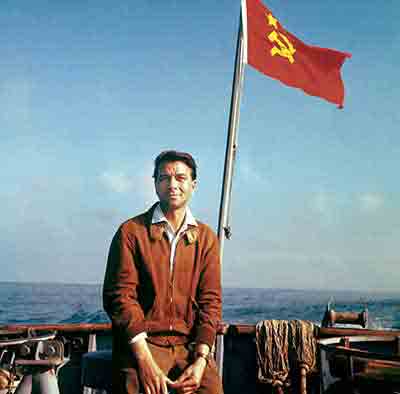
Exclusive USSR Photos
In 1956, Peter Bock-Schroeder (1913-2001) was the first West-Geman photographer to be permitted to work in the USSR.
Rare Soviet Photos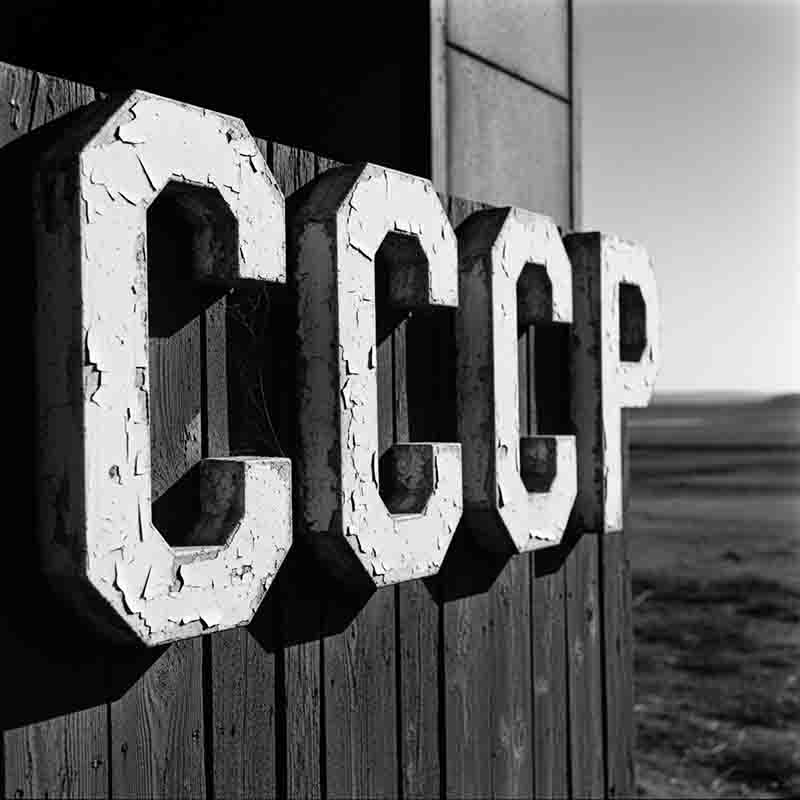
The abbreviation was widely used on official documents, currency, and state symbols of the Soviet Union.
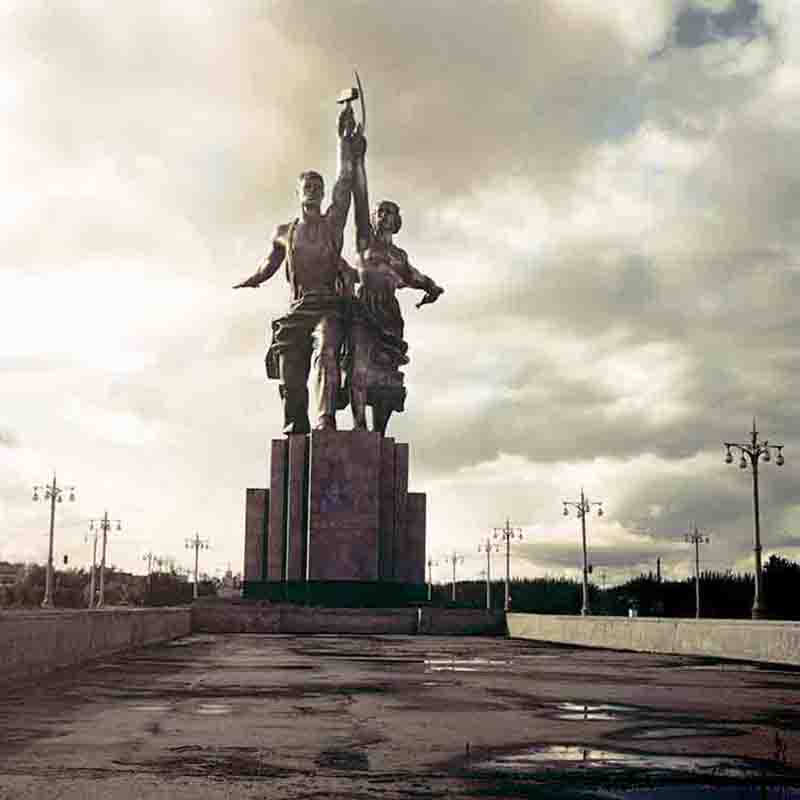
The iconic sculpture "Worker and Kolkhoz Woman", created by Vera Mukhina for the 1937 World's Fair in Paris.
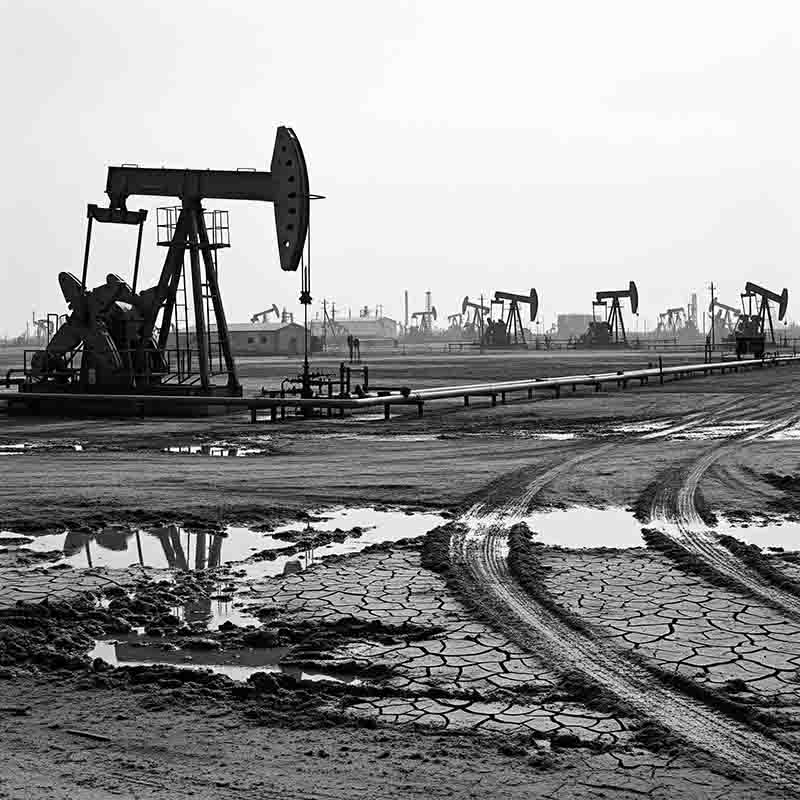
Located on the Absheron Peninsula, the area's rich oil and gas deposits have profoundly shaped local and world history, attracting explorers, entrepreneurs, and empires alike.
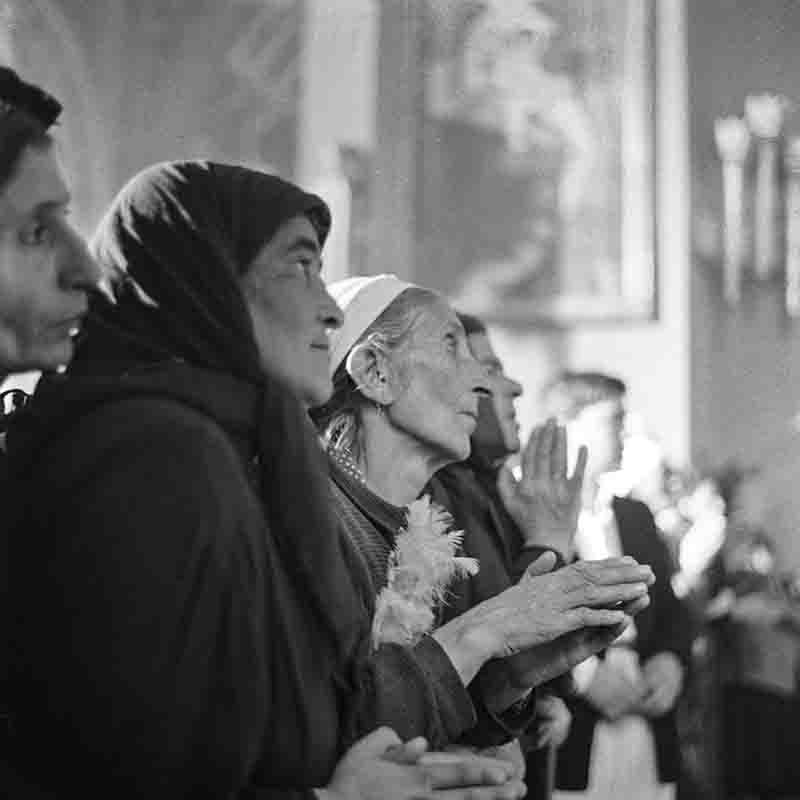
Throughout the post-war Soviet period, the Church continued to exist under state supervision.